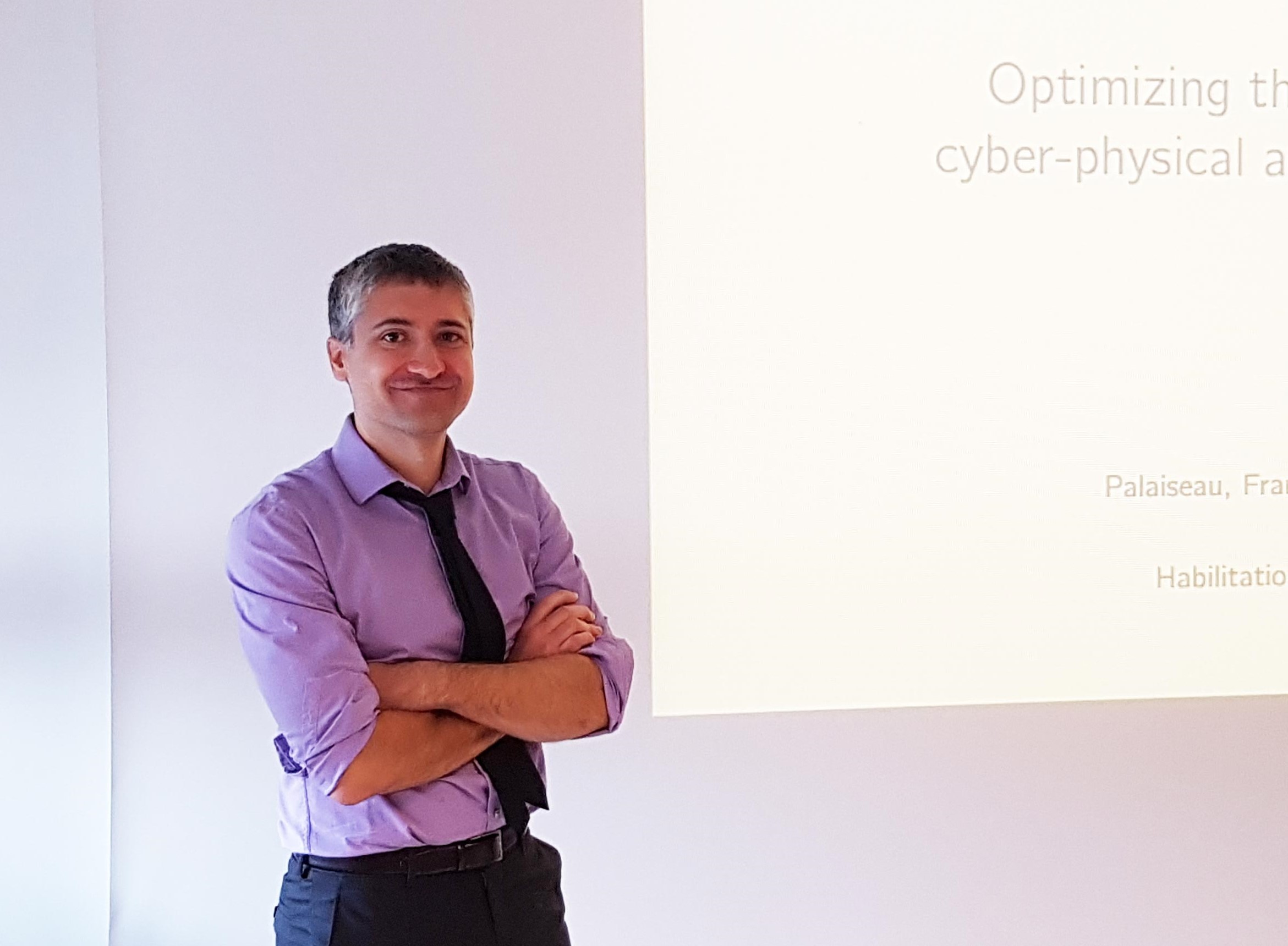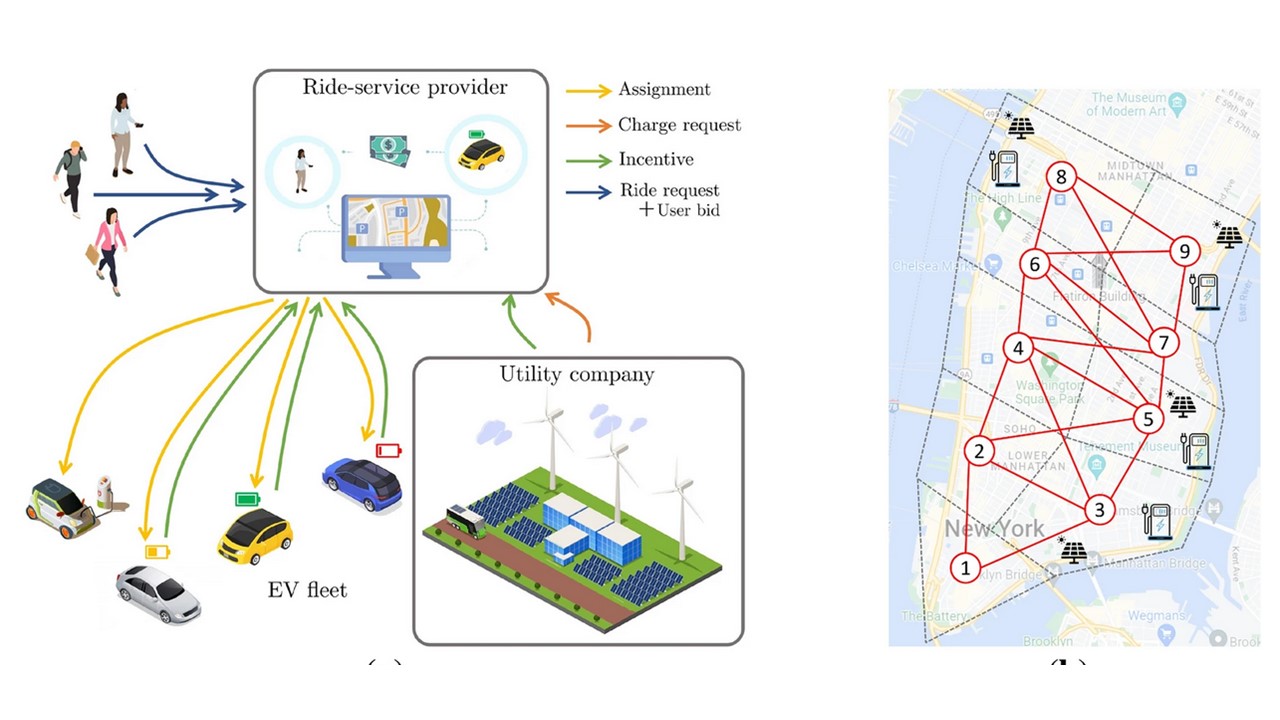Whether we're talking about wind or solar power, renewable energies are by their very nature intermittent, with significant variations in production over the course of the day. With this in mind, an international team of researchers, including Andrea Simonetto from ENSTA Paris, set out to see how a system could work to encourage vehicle recharging based on instantaneous production, with vehicle batteries being the best possible storage sites.
The researchers took the example of New York, the city for which the most carsharing, mobility and electric vehicle charging data is available, allowing a wide range of simulations.
The algorithm tested in these simulations proposed to maximize the objectives of electricity suppliers, vehicle drivers and car-sharing passengers. It is based on a pro-active model: as soon as electricity is available in abundance, information is sent to the vehicle fleet.
In return, the drivers have their own algorithm to determine whether it is indeed the right time to recharge, based on their position, the state of their battery, the price of electricity and the forecast demand for journeys in the time interval required for recharging.
Depending on these different parameters, the algorithm, solving an optimization problem, recommends accepting the recharging proposal or waiting for a new trip to help maintain the supply of trips.
These simulations show that an incentive system for recharging during production peaks would optimize the supply of electricity while maintaining a satisfactory quality of service, measured mainly by the number of trip requests actually satisfied.
These results, already arguing in favor of the deployment of a solution optimizing the use of electricity from 100% renewable sources, should find even more favorable ground with the foreseeable improvement in vehicle battery performance.
References:
Renewable-based charging in green ride-sharing
Perotti, Ospina, Bianchin, Simonetto & Dall’Anese
Scientific Report (2023) 13-15425




